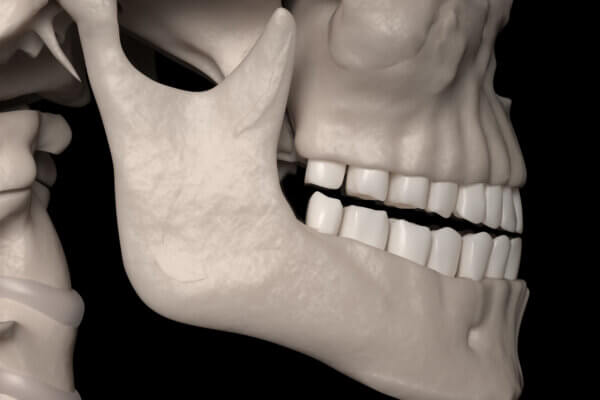Condylectomy is a surgery in which the mandibular condyle (the part of the jaw that articulates with the skull at the temporomandibular joint (TMJ)) is partially or completely removed. It is performed to treat problems such as:
- recurrent dislocation of the jaw
- TMJ ankylosis (partial reduction of jaw movements or complete immobility of the jaw)
- to correct an overgrowth of the condyle or facial deformities.
The primary goal of condylectomy is to relieve pain, restore proper jaw function, and improve the patient's quality of life.
How is a condylectomy performed?
There are different techniques to perform a condylectomy, but in general, it is performed under general anesthesia. During the surgery, the surgeon makes an incision in the affected area, accesses the mandibular condyle and partially or totally removes it. There are two different ways to do the condylectomy: intraorally or through the ear, and the decision depends on where the area to be treated is located. If the area is in the highest part of the condylar area, the procedure is done through the ear, otherwise, the procedure will be done intraorally.
In our center we use a minimally invasive approach, so the incisions are tiny and recovery is very fast. In some cases, plates or screwsmay be used as fixation to stabilize the mandible during recovery.
How long does recovery take after a condylectomy?
The length of recovery may vary depending on the complexity of the surgery and the individual response of each patient. Thanks to our minimally invasive techniques, after a condylectomy in our center it is not necessary to follow a liquid diet (except in exceptional cases), although a soft diet should be followed. A period of rest and post-surgery care is usually required, lasting about two weeks. During this time, rehabilitation exercises will be recommended to regain mobility of the jaw. Full recovery can take several months.
Are there risks or complications associated with condylectomy?
As with any surgical procedure, there are risks and possible complications. These may include infection, bleeding, damage to nearby structures, chronic pain, or limited jaw mobility. However, thanks to the minimally invasive surgical techniques used in our center, these risks are practically non-existent if the indications of the specialists are followed to the letter.
What results can I expect after a condylectomy?
The results of a condylectomy can vary depending on the specific problem and the individual response of each patient. In general, a significant reduction in pain, improvement in jaw function, and correction of facial deformities is expected. It is important to have realistic expectations and to understand that each case is unique.
If you are considering undergoing a condylectomy, we recommend that you consult with a specialist in maxillofacial or orthognathic surgery, who will be able to evaluate your situation
individualized and answer all your specific questions.
Related content:
Temporomandibular joint (TMJ): syndrome, symptoms and treatments
TMJ: What treatments do we perform at Maxillofacial Institute?
TMJ and its relation to headaches








